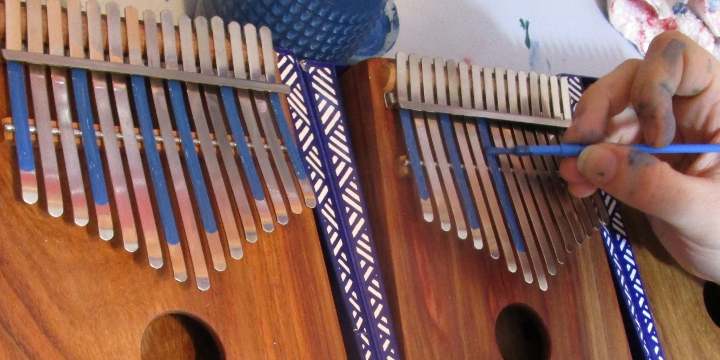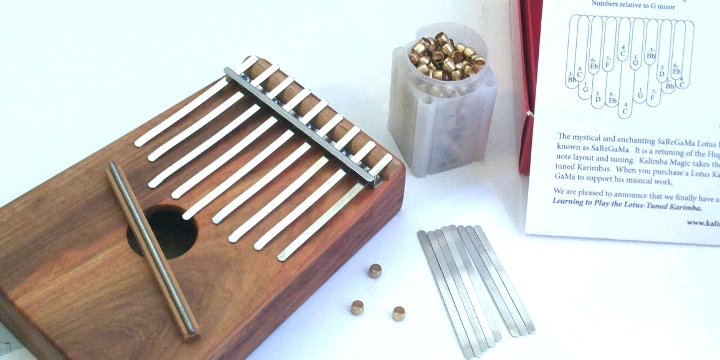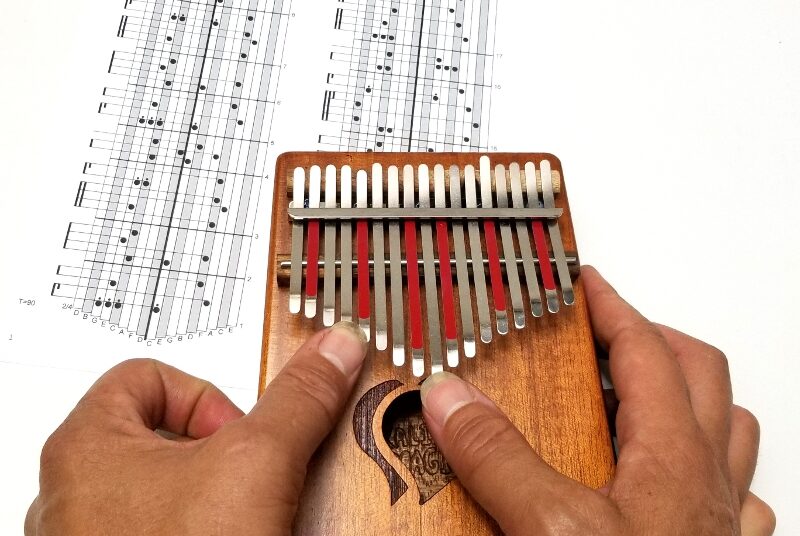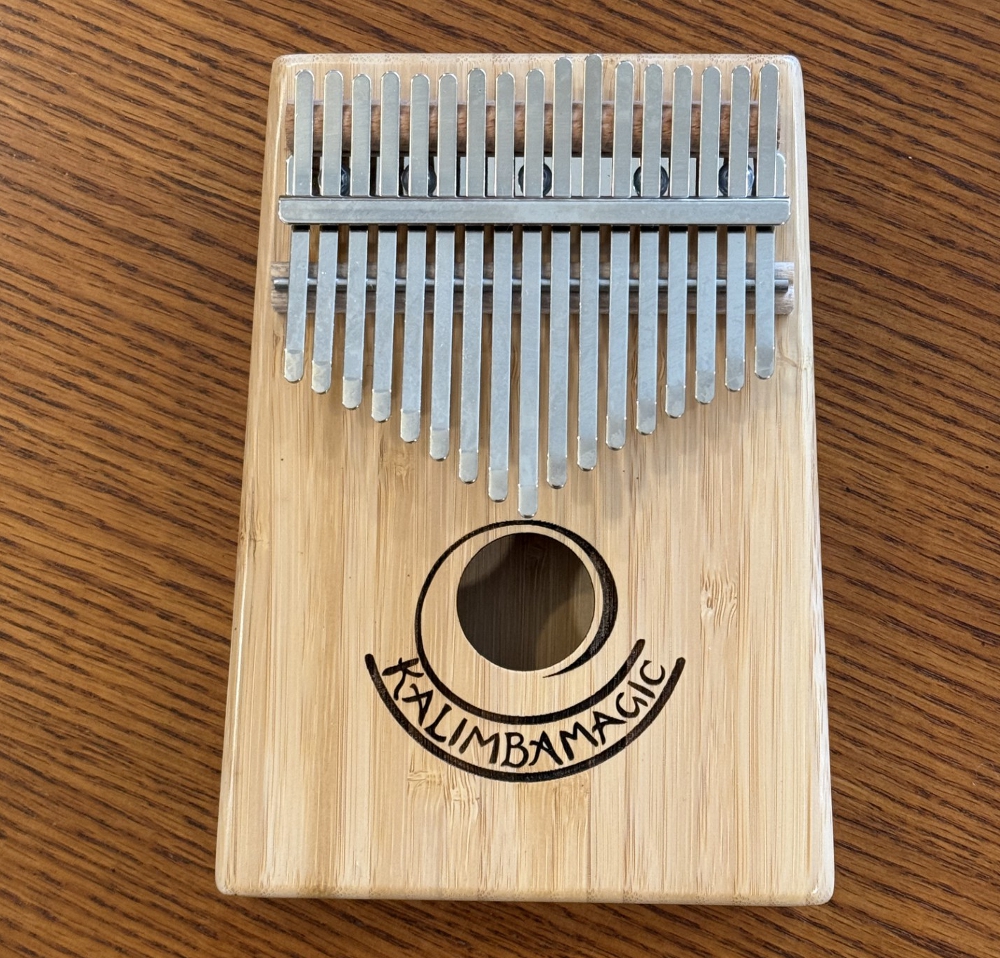
Use of this website constitutes acceptance of the Privacy Policy and User Agreement. Copyright © 2020 Kalimba Magic. All Rights Reserved.
Most of the kalimbas I play – and consequently, most of the kalimbas I sell – are Hugh Tracey Kalimbas, made by African Musical Instruments (AMI) in South Africa.
When I started Kalimba Magic in 2005, I ordered about 200 kalimbas, and it took about six weeks from when I placed the order to when they arrived at my door.
Now, I order over 1000 kalimbas at a time, and it takes six to nine months for the kalimbas to get here. Why so long? Supply chain issues, more orders from other folks, bigger orders, exchange rate snafus, and a variety of unknowns as well.
We just received one of these enormous orders. I need to raise some quick cash to send on to Africa to finish paying for it. I invite you to use the coupon code HT20 at the Kalimba Magic Shop through Sept 8, 2016 to get 20% off the price of your next Hugh Tracey kalimba.
A thousand kalimbas is enough to fill 35 big cartons. These cartons are delivered to my home in a huge truck and are left on the street. I haul them into my front yard, organize them, and then cart them into Kalimba Magic Studios (my former living room) which acts as a staging area. We order about 20 different basic types of Hugh Tracey kalimba, and it takes some work to keep the shipment organized.

Hugh Tracey came up with the idea of painting every third tine on his kalimbas back in the 1950s. He did this because people found playing the kalimbas to be confusing if the tines are unpainted. The painted tines act as place markers – a particular note will be on a painted tine, one shorter than a painted tine (toward the outside), or one longer than a painted tine (toward the center). Furthermore, since Kalimba Magic came on the scene in 2005, the painted tines can be used to transfer musical information from the tablature in the song books onto the kalimba. If the kalimba tines were not painted correctly, you could not use the books.
As you can see, the painting of the tines is really important, and we take this seriously. In order to ensure that the tines on all the different kalimbas are painted correctly, we order our kalimbas unpainted, and do it ourselves. This also gives you the freedom to select the paint color (blue is the classic color, so if you don’t specify the tine color or if you want it really fast, you will probably get blue). Or you could choose to get an unpainted kalimba.
In addition, we have kalimba setups such as the Bb Treble and the D Treble that are unique – we are the only ones who paint kalimbas as Bb or D Trebles.

What’s more, there are a number of kalimbas, such as the SaReGaMa tunings or the box karimbas, which require that we take kalimbas apart and rebuild them. Rebuilding could imply a simple retuning, or actually removing every tine, rearranging them, bending, and perhaps putting buzzers on some of them. Sometimes we have to remove the bridge setup from one kalimba and do a Frankenstein-style transplant to another kalimba body.

Once the kalimbas are built and marked correctly, we go on to how they sound. We make sure that each kalimba is properly tuned, check that the pickup works, and we fix any buzzes on the kalimba. In addition, we make sure the tines are spaced properly and make sure that the tine tips lie in the same plane, pushing down or pulling up tines that are out of alignment. And just to make sure everything is good, we play a little song. If any tines are improperly tuned, or if a tine is out of place or out of whack, we will hear the error when we play the kalimba’s song and we’ll fix it before it ships.
Over the last five years, we have performed these sorts of operations on thousands of kalimbas.
I cannot speak to other kalimba sellers’ quality assurance systems. And I shouldn’t brag, because we do make errors from time to time. But I will say that we are doing a lot of things with our kalimbas that other sellers just aren’t doing. We are trying our hardest to make the best and most interesting kalimbas available to you.
Don’t forget that a 20% discount is available through Sept. 8, 2016, using code HT20 when you purchase any Hugh Tracey kalimba.


Sign up for our newsletter and free resources with your email address:
We pinky promise not to spam you and to only send good stuff.
 Seek to Infuse Your Musical Moments With Beauty and Magic
Seek to Infuse Your Musical Moments With Beauty and Magic Kalimba Magic – We Give You The Tools You Need to Succeed
Kalimba Magic – We Give You The Tools You Need to Succeed Back in Stock! The Bamboo-17 Kalimba
Back in Stock! The Bamboo-17 KalimbaUse of this website constitutes acceptance of the Privacy Policy and User Agreement. Copyright © 2020 Kalimba Magic. All Rights Reserved.